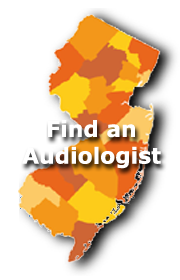United Healthcare’s Direct-to-Consumer Hearing Aid Dispensing Program
Not in Best Interests of Consumers With Hearing Loss
By Janet Koehnke, Ph.D., CCC-A
President, New Jersey Academy of Audiology
As President of the New Jersey Academy of Audiology (NJAA), I am writing to express our concerns regarding the United Healthcare’s (UHC) hi HealthInnovations direct-to-consumer hearing aid dispenser program. It is the opinion of the NJAA that this program is not in the best interests of individuals with hearing loss and may, in fact, have serious negative consequences for individuals who participate in it.
While the standard of care for hearing aid dispensing always involves in-person contact with hearing health professionals, United Healthcare would like you to believe that the direct, patient-to-audiologist provider model has become a barrier in terms of cost to the vast majority of people who are hard of hearing – those with mild-to-moderate hearing loss.
For the consumer with hearing loss, it is easy to see why obtaining a hearing aid at no or reduced cost is attractive. However, this is one case where taking short cuts can really hurt you. It is important for consumers with hearing loss to understand that purchasing a hearing aid is not like buying headphones or other personal electronics devices in which the entire process can be driven by the seller with the cheapest price.
Before ordering hearing aids under this program, UHC’s model instructs consumers to have their hearing tested by their physician. UHC also points out that hi HealthInnovations audiologists and hearing professionals are available in many U.S. cities to provide the hearing test free of charge. Consumers who have had their hearing tested within the past year can use the results from that evaluation to order online.
After having their “hearing tested”, consumers are asked to submit their results online, via fax, or by mail. UHC requests only air conduction thresholds for the hearing aid selection and fitting process. In fact, the online form provides no opportunity to report additional testing information or comments, and asks no questions of the consumer.
It is important to note that air conduction thresholds are only one small part of the test battery used by an audiologist to ensure a valid and reliable evaluation. These thresholds alone do not provide the information needed to determine the type of hearing loss or to ascertain whether the hearing loss requires medical attention. It is well known that in many cases of mild-to-moderate hearing loss, issues such as excessive wax in the ear canal, external or middle ear infections, tumors or other underlying conditions may not only contribute to a hearing loss, but also require medical intervention. Failure to address a treatable medical condition certainly puts a patient at great risk. Once treated, the hearing loss may resolve and the patient may not need a hearing aid.
Even if the consumer’s hearing evaluation is conducted by a licensed audiologist who identifies the possibility of an underlying medical condition, UHC will be unaware of it based on the air conduction thresholds. Thus, UHC cannot possibly ensure that the consumer consulted with a physician before submitting their test results on the UHC website to move forward with the purchase of hearing aids. Finally, UHC cannot ensure the accuracy of the threshold measurements or even if they were obtained by a qualified professional.
Threshold errors would likely result in selection of amplification that is not appropriate for the individual. At the very least, over or under amplification will create communications challenges for the hearing aid wearer. At worst, significant over amplification may cause permanent, noise-induced hearing loss,
Once UHC receives the air conduction thresholds, hearing aid recommendations are provided to consumers based on UHC’s limited selection of four devices.. The hearing aid(s) are then mailed directly to the consumer; there is no provision for follow-up to verify the appropriateness of the settings of the device(s) and/or provide individual instruction regarding use and care.
There are many other issues raised by the UHC model, although they claim to be able to provide appropriate amplification and maximize the benefits of that amplification through a process in which a consumer purchases a medical device with no professional support or follow-up. Who will evaluate the patient’s dexterity to change batteries and insert hearing aids in their ears? Who will provide appropriate orientation to ensure proper use and cleaning of the hearing aids? Who will provide communication strategies? Who will identify visual or cognitive issues that may impact the plan of treatment? Who will determine whether there is central as well as peripheral auditory damage and take the steps necessary to provide a professional program of aural rehabilitation? Who will verify the settings of the hearing aids and work through the myriad of issues and problems that often occur following a hearing aid fitting? None of this can be adequately accomplished online.
Consumers must keep in mind that hearing aids are medical devices, and the cost of hearing care includes comprehensive diagnostic testing and interpretation, development of the most appropriate treatment plan, hearing aid selection, fitting, verification, aural rehabilitation, communications strategy counseling and patient follow-up. While it is certainly appropriate to be price sensitive when making such a significant purchase, it is important to understand that the overall goal of the process is to achieve the most successful outcome possible for the individual. After all, purchasing hearing aids at a lower price will be costly if they end up sitting unused on the night table.
Audiologists across the country embrace the idea of making hearing aids more accessible to consumers with hearing loss. However, we at the New Jersey Academy of Audiology want you to know that we do not consider the United Healthcare approach to be a responsible means to achieve this goal.
The NJAA Board welcomes your comments and questions. We can be reached at our website: www.njaudiology.org.
|

